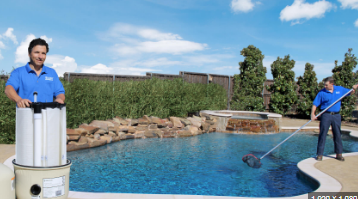
Swimming pool resurfacing is a crucial part of swimming pool area servicing that improves the visual attraction, longevity, and basic safety of your own swimming pool. Choosing the proper resurfacing materials can significantly impact the endurance and look of the pool area. Below are a few crucial tips on how to choose the best celina pool resurfacing materials to meet your needs.
1. Take into account Your Financial Allowance
Your budget is among the main things to consider when picking a swimming pool resurfacing materials. Distinct components differ significantly in cost, and it’s essential to harmony good quality with value. Although higher-finish supplies like ceramic tiles or pebble coatings might provide superior longevity and aesthetics, they are offered at a greater price. Conversely, plaster is really a far more price range-helpful alternative, though it may require more recurrent upkeep. Establish your financial allowance beforehand to define the options.
2. Analyze Longevity and Longevity
The toughness and lifespan from the resurfacing fabric are very important. You will want material that will hold up against the weather and also the wear of standard pool use. Plaster, as an example, usually endures 5-10 years, although components like quartz or pebble coatings may last as much as two decades or even more. Fibreglass is an additional very long-enduring solution, recognized for its potential to deal with algae and yellowing. Assessing how much time a materials lasts can help you make a a lot more cost-effective selection in the long run.
3. Think about Servicing Specifications
Various resurfacing components call for various levels of servicing. Plaster types of surface might need far more recurrent care, including acidity washing and normal scrubbing, to stop algae build-up and staining. Pebble and quartz coatings, on the flip side, are relatively low-maintenance and more resistant to frequent swimming pool area concerns. Consider the length of time and energy you are able to spend money on maintaining your swimming pool area area when making your assortment.
4. Artistic Appeal
The appearance of your swimming pool is yet another important consideration. The resurfacing materials you end up picking will significantly affect the entire seem of your pool. Plaster can be purchased in a variety of colours, allowing for some customization, but its clean, matte accomplish is probably not as visually stunning as other options. Pebble finishes give you a more natural, textured appear and are available in an array of shades, building a special and desirable artistic. Ceramic tile surfaces give you the most layout versatility, with a wide array of colors, patterns, and finishes to pick from, making it possible for elaborate and custom designs.
5. Comfort and security
Safety and comfort are necessary aspects, especially when children or older people uses the swimming pool. Some supplies might be slick when damp, while some have better grip. Pebble and aggregate surface finishes, for example, give a non-move surface, boosting protection. Comfort is additionally essential materials like fiberglass provide a sleek surface area that’s gentle on feet, whilst pebble coatings, although visually pleasing, can be rougher to touch. Assess the comfort and security attributes of every single substance to make sure a pleasant fishing practical experience for all those customers.
6. Chemical substance Resistance
Pool area h2o biochemistry could affect the durability and appearance in the resurfacing materials. Some components are definitely more immune to compound injury than others. Quartz and pebble coatings, for example, are highly resistant against substance wear, keeping their appearance and integrity with time despite exposure to swimming pool chemicals. Plaster, although less expensive, may be much more vulnerable to substance imbalances, leading to etching and yellowing. Choosing a materials with high chemical amount of resistance can reduce maintenance fees and lengthen the surface’s life-time.
7. Ecological Factors
If you’re environmentally conscious, think about the environment influence of your resurfacing components. Some components, like eco-friendly fiberglass, tend to be more sustainable and also have a decrease enviromentally friendly effect than the others. Additionally, components that need significantly less regular replacing or upkeep make contributions less to land fill waste minimizing the general enviromentally friendly footprint of your respective swimming pool area.
Bottom line
{pool builder celinapool builder heath tx substance entails balancing your financial budget, ideal durability, servicing personal preferences, cosmetic appeal, protection, ease and comfort, compound opposition, and environmental effect. By carefully evaluating these elements, you may pick a fabric which not only increases the beauty and usefulness of your own pool area but additionally provides long-term satisfaction and value. Make an informed choice to enjoy a properly-taken care of and visually appealing pool area for years to come.


